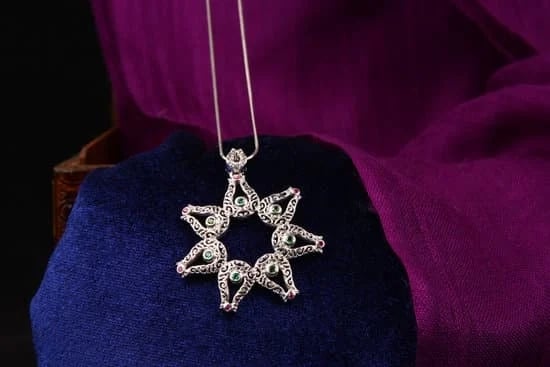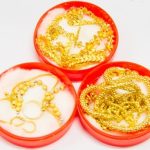Silicone beads have become a popular choice in jewelry making due to their versatility, durability, and vibrant colors. If you are looking to add a personal touch to your accessories, learning how to make silicone beads for jewelry can be a rewarding and cost-effective option. By creating your own silicone beads, you can customize the colors, shapes, and sizes to suit your style preferences perfectly.
To get started on this creative journey, you will need a few essential materials such as a silicone mold, silicone mix, coloring agents, and other basic tools. The process of making silicone beads involves preparing the silicone mix correctly to achieve smooth and evenly colored results. With step-by-step instructions on preparation and molding techniques, you can ensure that your handmade beads turn out beautifully every time.
Whether you are a beginner or an experienced crafter, mastering the art of coloring techniques for silicone beads can elevate your jewelry designs. From mixing colors to layering different hues for intricate patterns, there are endless possibilities for creating unique pieces that showcase your artistic flair. Additionally, guidance on curing methods and finishing touches like sanding and polishing will help give your handmade silicone bead jewelry a professional finish.
Materials Needed
Silicone beads have become increasingly popular in jewelry making due to their versatility, durability, and vibrant colors. Making your own silicone beads can not only be a fun and creative process but also a cost-effective option compared to purchasing pre-made beads. To make your own silicone beads for jewelry, you will need a few key materials to get started.
One of the essential supplies needed is a silicone mold that will determine the shape and size of your beads. Silicone molds come in various designs, from simple spheres to intricate geometric shapes, allowing you to create customized beads for your jewelry pieces. Additionally, you will need a high-quality silicone mix specifically formulated for making jewelry beads. This mix should be flexible, easy to work with, and able to withstand curing processes like air-drying or baking.
| Materials Needed | Description |
|---|---|
| Silicone Mold | Determines the shape and size of the beads |
| Silicone Mix | Formulated specifically for making jewelry beads |
| Coloring Agents (Pigments, Dyes, Mica Powders) | Adds color and vibrancy to the beads |
Once you have gathered all the necessary materials, you can move on to the next steps of preparing the silicone mix, molding process, coloring techniques, curing methods. By following these steps meticulously, you can create beautiful handmade silicone beads that will elevate your jewelry-making projects while showcasing your creativity.
Preparation
Gathering Materials
Before you begin the process of making silicone beads for your jewelry, make sure you have all the necessary materials on hand. You will need a silicone mold, silicone mix, coloring agents (if desired), measuring cups and stirring sticks. It’s important to have everything prepared and within reach to avoid any delays during the mixing process.
Measuring and Mixing
To ensure that your silicone beads turn out smooth and uniformly colored, it is crucial to follow the instructions for mixing the silicone properly. Start by measuring out the appropriate amount of silicone mix according to the manufacturer’s recommendation. Use a clean and dry container to mix the components thoroughly until you achieve a consistent texture.
Incorporating Coloring Agents
If you wish to add color to your silicone beads, this is the time to incorporate coloring agents into the mix. You can use liquid or powder pigments specifically designed for use with silicone. Remember that a little goes a long way, so start with small amounts and gradually increase until you achieve your desired hue. Mix the coloring agents thoroughly into the silicone mix until evenly distributed for best results when molding your beads.
Molding Process
Silicone beads have become increasingly popular in the world of jewelry making due to their versatility and durability. Making your own silicone beads can be a rewarding experience that allows you to customize your designs and save money in the process. One of the key steps in creating silicone beads for jewelry is mastering the molding process, which involves pouring the silicone mix into molds and allowing it to set properly before demolding.
To start the molding process, you will need a silicone mold specifically designed for making beads, silicone mix, coloring agents if desired, measuring cups, stirring sticks, and a flat surface for drying. Begin by preparing your workspace and ensuring that all materials are within reach. Measure out the desired amount of silicone mix according to the instructions provided on the packaging.
Next, carefully combine the silicone mix with any coloring agents if you wish to add color to your beads. Stir thoroughly until the color is evenly distributed throughout the mixture. Take caution not to introduce any air bubbles while stirring, as this can affect the final appearance of your beads.
Once you have achieved a smooth consistency, it is time to pour the silicone mix into the bead molds. Fill each mold cavity with an even amount of mixture, ensuring that they are all level for uniform beads.
| Materials Needed | Supplies |
|---|---|
| Silicone Mold | Mold specifically designed for making beads |
| Silicone Mix | Main material for creating silicone beads |
| Coloring Agents | Optional addition for adding color to beads |
| Measuring Cups | To measure out silicone mix accurately |
Coloring Techniques
When it comes to making your own silicone beads for jewelry, one of the most exciting parts of the process is adding color to your creations. Whether you prefer bright and bold hues or subtle pastel tones, there are endless possibilities for customizing your silicone beads to suit your personal style. In this section, we will explore some helpful tips and tricks for coloring your silicone beads, including how to mix colors and layer them to achieve unique designs.
Mixing Colors
To begin creating colorful silicone beads, it’s essential to have a variety of coloring agents on hand. You can use liquid pigments specifically designed for use with silicone, such as silicone dyes or pigments made for resin crafting. These colorants come in a wide range of shades and can be mixed together to create custom colors.
Start by adding a small amount of pigment to your silicone mix and stir thoroughly to distribute the color evenly. Experiment with different ratios of colorants to achieve the desired hue for your beads.
Layering Colors
For more intricate designs and effects, consider layering different colors in your silicone beads. To create multi-colored beads, pour a small amount of one colored silicone mix into your mold and allow it to partially set. Then add another color on top before filling the rest of the mold with the base color.
This technique allows you to create marbled or gradient effects within each bead. Remember that the colors may blend slightly when poured together, so experiment with different combinations and techniques to achieve unique and eye-catching designs.
Additional Tips
- Work quickly when mixing and pouring colored silicone as it can start setting up faster than uncolored silicone.
- Use disposable gloves to protect your hands from getting stained by the pigments.
- Clean your mixing tools thoroughly between each color change to prevent cross-contamination.
- Allow each color layer to fully cure before adding another layer or demolding the beads.
By incorporating these coloring techniques into your bead-making process, you can create stunning jewelry pieces that showcase your creativity and style while learning how to make silicone beads for jewelry fun and rewarding experience.
Curing and Finishing
Once you have molded your silicone beads and they have set properly, the next step is to cure them. Curing is essential to ensure that the beads are fully hardened and ready for use in jewelry making. There are two main methods to cure silicone beads: air-drying and baking.
1. Air-drying: After demolding the silicone beads from the mold, let them air dry at room temperature for 24-48 hours. To speed up the drying process, you can place the beads near a fan or in a warm, dry area. Make sure to check the beads periodically to ensure they are hardening evenly.
2. Baking: Another option for curing silicone beads is to bake them in an oven. Preheat your oven according to the instructions provided with your specific silicone mix. Place the molded beads on a baking sheet lined with parchment paper and bake them for the recommended time and temperature. Be cautious not to overbake as this can cause discoloration or deformation of the beads.
After curing your silicone beads, it’s time to add finishing touches to achieve a professional look. This includes sanding any rough edges or imperfections on the beads using fine-grit sandpaper. Gently smooth out any uneven surfaces until you are satisfied with the texture of the beads.
To further enhance their appearance, you can polish the beads using a soft cloth or polishing pad. This will give them a shiny finish and make them look more appealing in your jewelry designs.
Remember that attention to detail during both curing and finishing stages is crucial when making silicone beads for jewelry. By following these steps carefully, you can create beautiful handmade beads that are durable and unique for your crafting projects.
Stringing and Design Ideas
Silicone beads are not only versatile and durable but also offer endless possibilities for creating unique jewelry pieces. Once you have successfully made your own silicone beads, the fun part begins as you can start incorporating them into different types of jewelry designs. From bracelets to earrings, here are some creative suggestions on how to showcase your handmade silicone beads:
- Bracelets: Using a mix of different colored silicone beads in varying sizes can create a stunning and eye-catching bracelet. Whether you prefer a minimalist look with just a few beads or a bold statement piece with multiple colors and shapes, the options are limitless. Consider mixing in other materials like metal or wooden beads to add texture and contrast.
- Necklaces: Silicone beads can be strung together to make beautiful and modern necklaces. Experiment with different lengths, bead sizes, and color combinations to create a necklace that fits your personal style. Additionally, mixing in other elements like pendants or charms can add interest and individuality to the design.
- Earrings: Create playful and lightweight earrings by using small silicone beads in various colors. You can opt for simple stud earrings with one bead or more elaborate designs with dangling clusters of beads. Mixing in metallic findings or chains can elevate the look of the earrings while still highlighting the uniqueness of the silicone beads.
Whether you are looking to make a bold fashion statement or add a pop of color to your everyday outfits, handmade silicone beads offer endless opportunities for creativity in jewelry making. Experimenting with different design ideas and techniques will not only allow you to express your personal style but also showcase your craftsmanship in creating one-of-a-kind pieces.
Have fun exploring the versatility of silicone beads and let your imagination guide you in designing jewelry that reflects your personality and creativity.
Maintenance and Care
Silicone beads have become increasingly popular in the realm of jewelry making due to their unique texture, durability, and versatility. Making your own silicone beads for jewelry not only allows you to unleash your creativity but also proves to be a cost-effective and enjoyable endeavor. By following the steps outlined in this guide on how to make silicone beads for jewelry, you can create stunning pieces that reflect your personal style and vision.
Once you have successfully crafted your silicone beads and incorporated them into your jewelry designs, proper maintenance and care are essential to ensure their longevity and preserve the integrity of the pieces. To keep your silicone bead jewelry looking its best, it is important to store it in a dry and cool place away from direct sunlight. This will help prevent any unnecessary exposure to heat or moisture that could potentially damage the beads over time.
Moreover, when cleaning your silicone bead jewelry, simply wipe them gently with a soft cloth dampened with mild soap and water. Avoid using harsh chemicals or abrasive cleaners that may cause discoloration or tarnishing.
By treating your handmade silicone bead jewelry with care and attention, you can enjoy wearing these unique creations for years to come, showcasing your craftsmanship and individuality in each piece. Remember, proper maintenance not only enhances the appearance of your jewelry but also ensures that it remains in pristine condition for future use.
Frequently Asked Questions
What Do You Need to Make Silicone Beads?
To make silicone beads, you will need silicone bead molds, silicone resin, pigment powders or liquid dyes for coloring, mixing cups and sticks, a heat source or UV lamp for curing, and optionally glitter or other embellishments to customize the beads.
How Do You Make the Perfect Silicone Bead?
Making the perfect silicone bead involves carefully measuring and mixing the silicone resin with the desired colorants or additives. It is essential to mix thoroughly to avoid any streaks or uneven coloring in the final bead. Pouring the mixture into molds evenly and allowing it to cure completely is crucial for achieving smooth and flawless beads.
What String Is Best for Silicone Beads?
When it comes to stringing silicone beads, it is best to use materials that are durable and safe for use with silicone such as nylon cords or elastic cords specifically designed for jewelry making. These types of strings ensure that your finished jewelry pieces are sturdy and secure when worn.
Remember to consider the weight and size of your beads when selecting the appropriate string for your project.

Welcome to my jewelry blog! My name is Sarah and I am the owner of this blog.
I love making jewelry and sharing my creations with others.
So whether you’re someone who loves wearing jewelry yourself or simply enjoys learning about it, be sure to check out my blog for insightful posts on everything related to this exciting topic!





